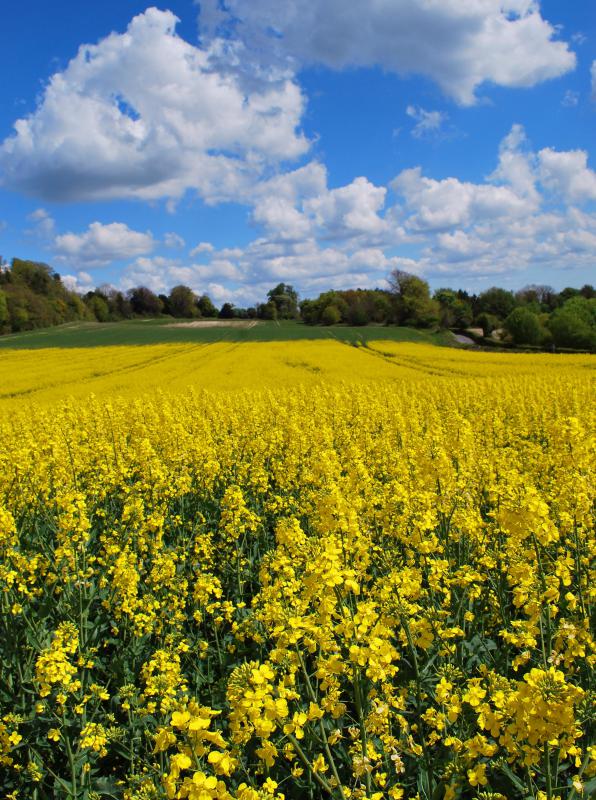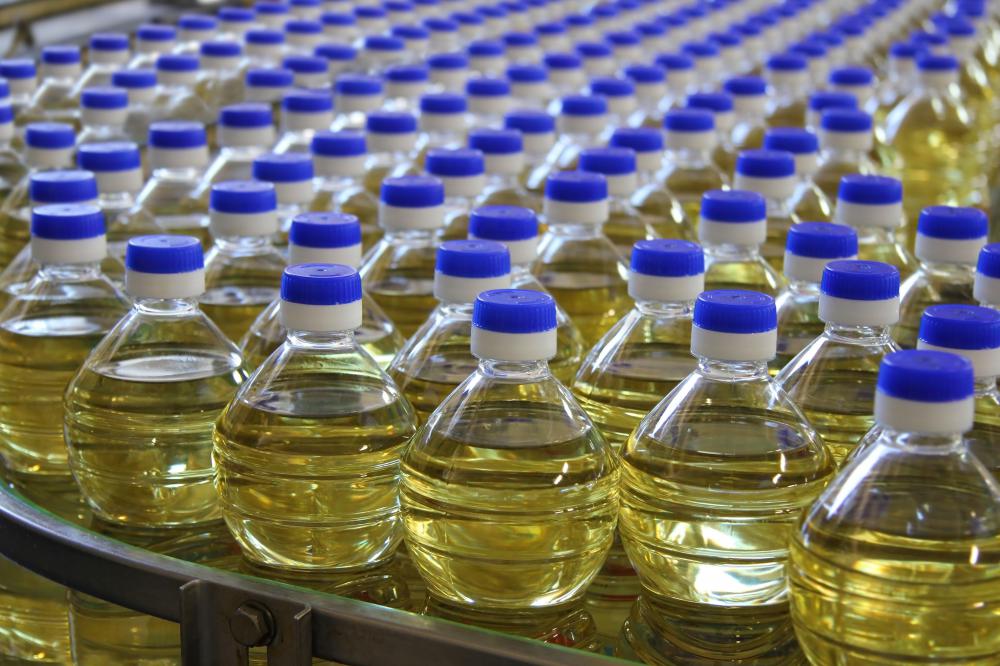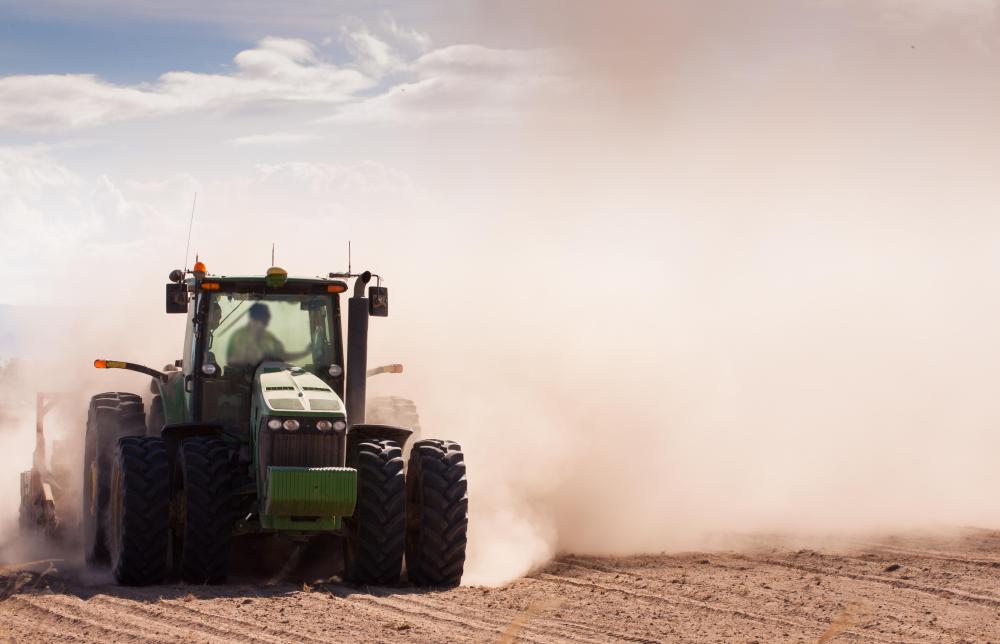At DelightedCooking, we're committed to delivering accurate, trustworthy information. Our expert-authored content is rigorously fact-checked and sourced from credible authorities. Discover how we uphold the highest standards in providing you with reliable knowledge.
What is Canola Oil?
Canola oil is commonly derived from a rapeseed oil from plants specially bred to be low in erucic acid, which reportedly imparts an unfavorable taste to the oil and may cause health problems. It can also be a derivative of the seeds that are produced by cross-breeding multiple types of rapeseed. It was developed in the mid 1970s in Canada and gets its name from the term Canadian oil, low acid — it uses the letters c-a-n from Canadian, an o from oil, an l from low and an a from acid to form the word canola.
Considered by many to be the healthiest of all popular cooking oils, canola oil is frequently credited with reducing the risk of coronary heart disease in humans. This is based on its high monounsaturated fat content and its low percentage of saturated fat. Canola oil is also rich in omega-3 fatty acids, which are considered beneficial to human health.

Canola seed was once only grown in Canada, which still produces about half of the North American canola seed crop. The United States now grows the other half of the seven to 10 tons (6,350 to 9,072 kg) of canola seed produced annually. Pakistan, Mexico, Japan and China are major consumers of canola seed. The United States leads the world in consumption of canola oil and canola meal.

Original rapeseed oil was used centuries ago to burn in lamps in Europe and Asia. Over the years, a small number of people began using it in food preparation. When steam power was developed, rapeseed oil was found to be a perfect machine lubricant that clung to moist metal surfaces better than other available oils. The oil became even more popular during World War II as a lubricant for military ship steam engines. When the war embargoes restricted its import from Europe and Asia, Canada increased its production of rapeseed to meet the military needs.

An attempt to market a refined version of rapeseed oil for cooking was made in the mid 1950s, but most consumers found its greenish color and off-putting taste undesirable. Animal testing indicated the oil may be harmful to human livers and hearts. In 1968, a lower acid version of rapeseed was developed. This was the precursor to the canola oil that was first marketed for cooking in 1974.

Canola seeds and oil continue to be refined to improve their health benefits. In 1998, a new strain was developed that is considered the variety most resistant to diseases and drought. These improvements and developments in canola production have been mainly attributed to genetic engineering.
AS FEATURED ON:
AS FEATURED ON:

















Discussion Comments
Low cost garbage. They should've stuck to using it as mechanical lubricant for machinery.
Unfortunately this nasty, industrially processed frankenfood poison pollutes nearly all Canadian food, from deep fried chicken wings right down to sliced bread. For some (myself included) it is impossible to digest and causes stomach pains, cramps, gas and diarrhea. Every time I visit Canada it's hell trying to find anything to eat that's not had this industrially de-poisoned Crapola Oil snuck into it somehow or other.
Although Canola oil is generally considered healthy and safe, some people have concerns about the way it is produced, especially canola cooking oil.
Many of the rapeseed plants that the oil comes from are genetically modified, which many people find concerning.
Also in the process of extracting the oil, a fairly potent chemical, Hexane, is used, which can remain in trace form in the oil afterwards.
Finally, some state that the extensive processing that most canola oil goes through -- purifying, degumming, and bleaching, among other things -- is unhealthy, and changes the structure of the omega-3s, making them less potent.
Huh -- I never knew where the name came from, that's interesting.
Who would have thought that Canada was such a big producer of Canola oil?
Canola oil is also really handy for baking, and can be substituted for vegetable oil in almost every situation.
Post your comments